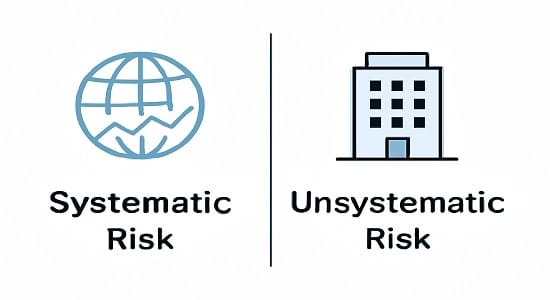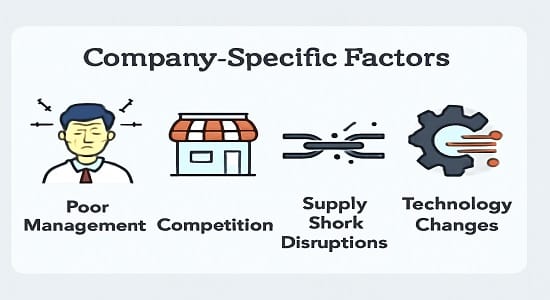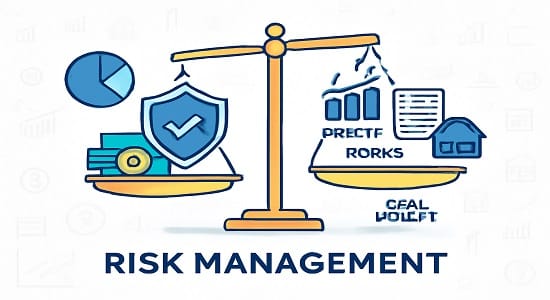Mastering Company-Specific Risk: Unsystematic Risk Management
In the world of investments, the concept of unsystematic risk. While no investment is entirely risk-free, understanding and managing different types of risks is critical to achieving your financial goals. One such type is unsystematic risk, which plays a crucial role in determining the success of individual investments. In this blog, we’ll break down the concept of unsystematic risk, its causes, examples, and strategies to mitigate it.
What is Unsystematic Risk?

Unsystematic risk, also called specific risk or idiosyncratic risk, is that risk associated with a particular company, industry, or sector. As opposed to systematic risk, unsystematic risk is confined only to certain areas or entities, and can thus be reduced with diversification.
For instance, pharmaceutical stocks may experience downtrends due to regulatory roadblocks or the failure of drugs coming to the market. Nonetheless, this usually doesn’t have much influence on any other company across various unrelated sectors such as tech and energy.
Types of Unsystematic Risk

This risk can be broadly categorized into the following types:
- Business Risk: It encompasses the intrinsic business risks that result from inherent elements such as poor operational efficiencies, lack of a coherent supply chain or reduced demand for products.
- Financial Risk: These are results of capital structure specifically debt of an organization. More leveraged company is likely to face financial uncertainty in a downward trend.
- Industry Risk: There are specific risks which occur only within particular industries. Oil companies risk the crude prices fluctuations while the technology companies deal with obsolescence, etc.
- Regulatory and Legal Risk: Regulatory or tax law changes as well as any legal controversy would heavily impact the profitability of the operations.
Causes of Unsystematic Risk

This risks are those arising from factors specific to a company or industry, such as:
- Management Decisions: Bad management or strategic mistakes can cause revenues to decline or losses to increase.
- Market Competition: High competition can cause a loss of market share or reduced profit margins.
- Technological Changes: In industries such as IT, failure to keep pace with changes in technology can make products or services obsolete.
- Supply Chain Disruptions: Reliance on a single supplier or geopolitical tensions can disrupt operations.
- Economic and social changes: Consumer preferences or demographic trends may shift in ways that affect certain industries.
Examples of Unsystematic Risk

- Company-Specific Example: In 2016, Samsung suffered major losses due to the recall of Galaxy Note 7 after several cases of its batteries catching fire. This had a devastating effect on Samsung’s smartphone division but did not affect any other industry.
- Industry-Specific Example: The aviation industry is often subject to disruptions in the form of fuel price fluctuations, regulatory changes, or travel restrictions, which are sector-specific.
- Legal Risks: Companies such as pharmaceutical players Sun Pharma have suffered from legal risks triggered by lawsuits over the company’s products, affecting their stocks.
Differences Between Systematic and Unsystematic Risk
| Aspect | Systematic Risk | Unsystematic Risk |
| Scope | Affects the entire Market | Affects specific companies/Sector |
| Example | Inflation,interest rate changes | Product recalls, management decision |
| Controllability | Cannot be eliminated | Can be reduced through diversification |
| Impact | Macro-level | Micro-level |
How to Mitigate Unsystematic Risk
While unsystematic risk cannot be entirely avoided, investors can significantly reduce it through the following strategies:
- Diversification: This is minimizing the unsystematic risks through investment in various asset classes, industries, and geographical locations. Suppose you invest your money in both the tech and healthcare stock portfolios; if poor performance in one of these sectors is reflected in the other, you may recover it.
- In-depth Research: Investigate a company thoroughly to know about its financial health, management, and industry trends before putting money in it.
- Portfolio Review: Periodic review and re balancing of the portfolio will ensure your investments are properly aligned with risk tolerance and changes in the market.
- Hedging: Use options, futures, or other financial instruments to hedge or protect against expected losses in individual investments.
- Avoid Over concentration: Do not focus too much on a single firm or industry to avoid unsystematic risk, which increases vulnerability.
Why Understanding Unsystematic Risk Matters

Both professional and amateur investors require knowledge of unsystematic risk to make their portfolios strong. Ignoring the specific risks will lead to tremendous losses, despite the fact that the overall conditions in the market are sound.
Another advantage is that with algorithmic trading and advanced data analytics tools, unsystematic risks can be found more easily. Investors can utilize these tools for making appropriate decisions and thus limit their potential exposure.
Unsystematic risk is the risk that is unique to a specific company or industry. It’s also known as non systematic risk, specific risk, diversiable risk, or residual risk.
